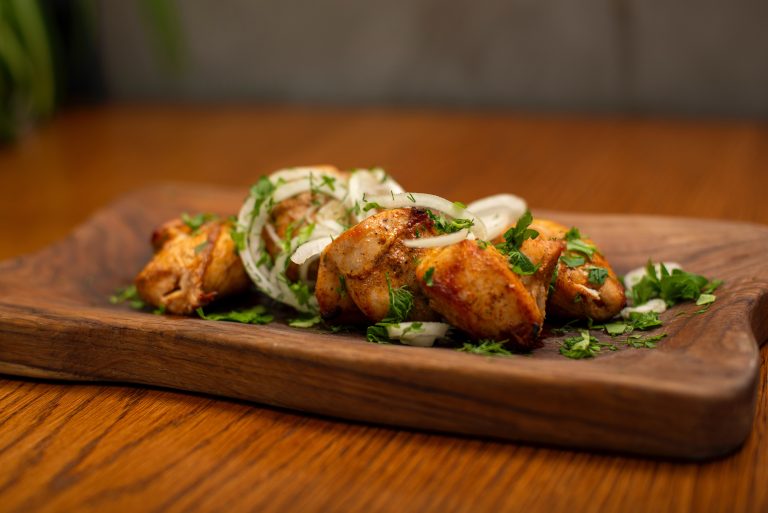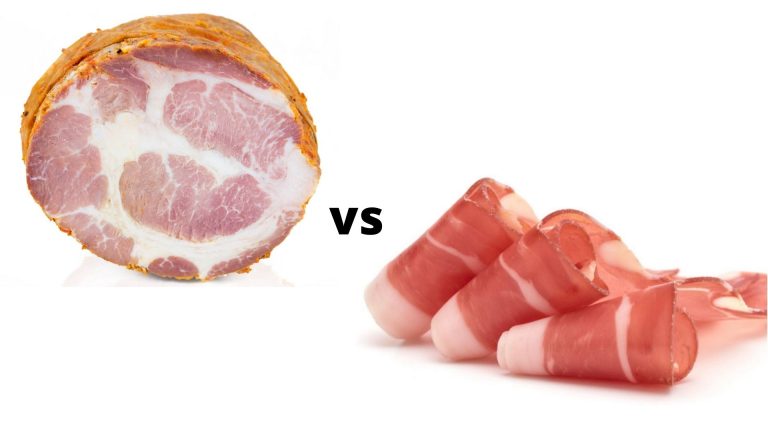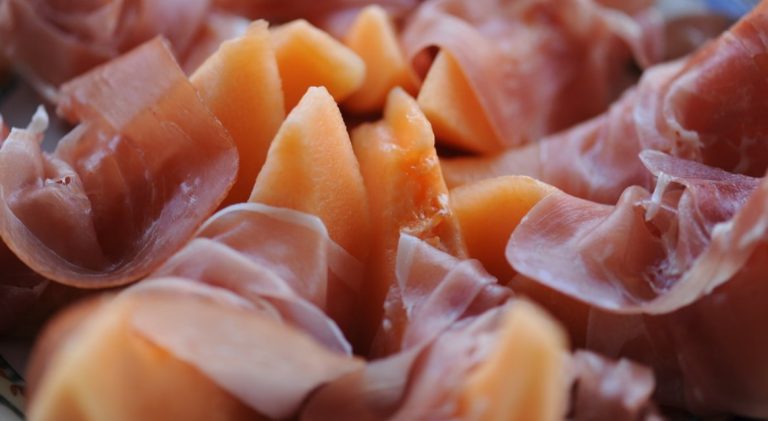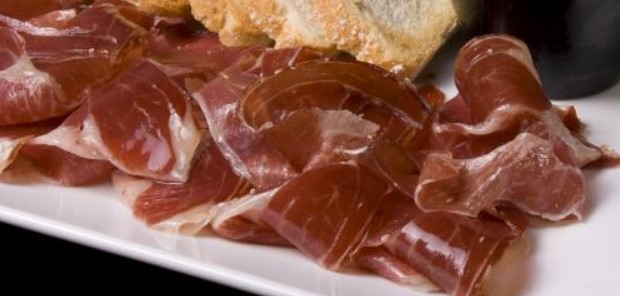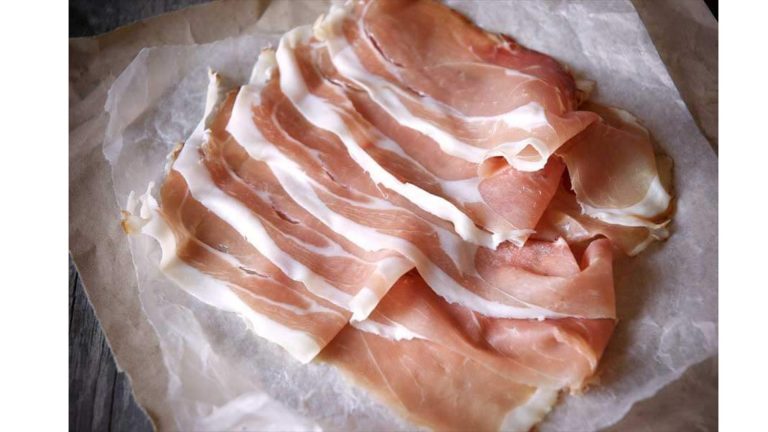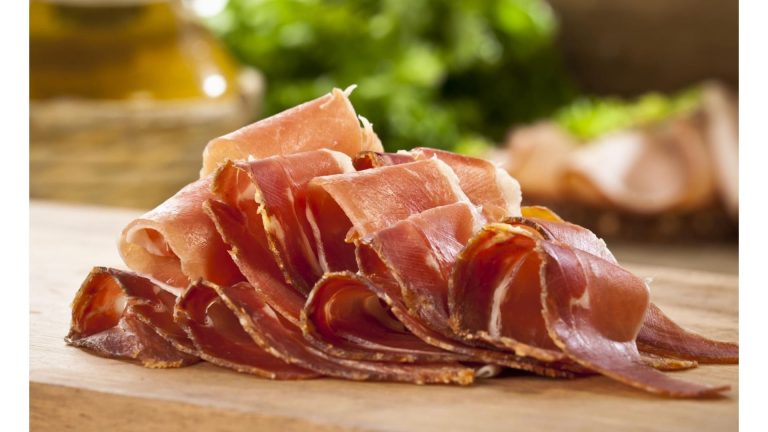Is Prosciutto Gluten-Free?
Italians are famous for many things, including red Ferraris, and delicious food that is enjoyed around the world.
Prosciutto is one of the favorite dishes served in homes across Italy daily, with passion and enthusiasm spilling over at the mention of food, with it being one of the favorite dishes served in homes across Italy daily.
But while eating Prosciutto many questions arise. Is prosciutto gluten-free, this is one such question.
Prosciutto is gluten-free, but it’s not safe to cross-contaminate with other foods.
Keep your food and kitchen clean, especially if you are buying prosciutto from a deli or grocery store.
If you have any doubt whether the prosciutto you are buying is gluten-free, ask them to take out the label.
Today, in this article I will answer all the questions related to prosciutto. Check it out.
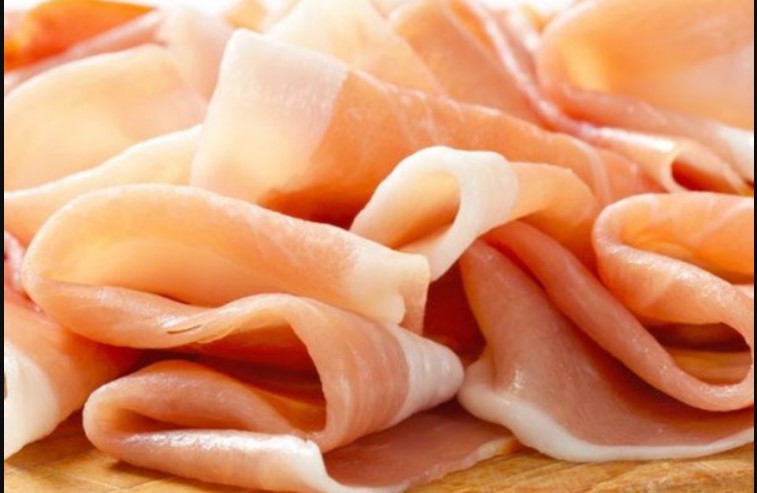
Table of Contents
What is Prosciutto?
Italian dry-cured ham is known as Prosciutto and is typically sliced very thinly and served uncooked.
A lot of passion and competition can be found in the regions of Italy, which offer different variations of Prosciutto.
It’s worthwhile to experiment to see which variety you prefer because each variant reflects the different flavors and characteristics of the region where they are made.
The Prosciutto di Parma and the Prosciutto di San Daniele are two of the most famous.
There are two types of prosciutto: cotto, which is cooked, and raw crudo.
Due to the seasoning process in the production of prosciutto, there is no reason why this meat can’t be eaten raw.
There is a tendency for prosciutto to dry out very quickly because it is cut into very thin slices.
If you don’t want a taste, don’t buy anything without it.
The meat should have a sweet taste with a hint of salt and be pink. Prosciutto is usually accompanied by a melon or asparagus.
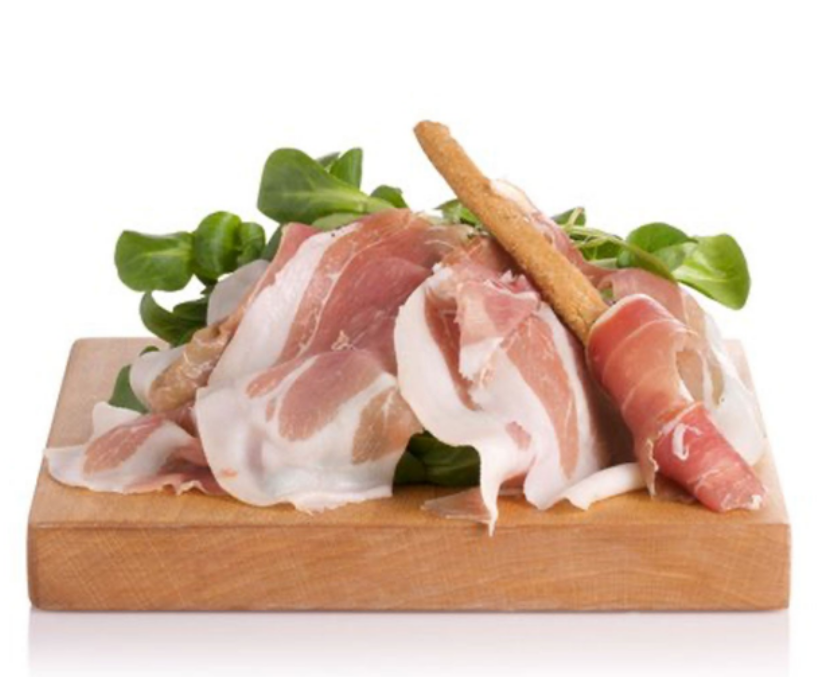
How Is Prosciutto Made?
The process of making prosciutto can take anywhere from nine months to two years, using only the hind leg of a pig.
The first step is to clean the meat and apply salt to the meat to kill any germs that may still be in the meat.
After two months, the salt is removed and the meat is left to cure or dry, which can take up to 18 months.
The entire process is lengthy and precise, but necessary to give the meat that tastes we have all come to appreciate.
The Best Way to Prosciutto
You should be able to watch the deli clerk slice the meat from the leg to ensure excellent flavor and texture.
It may be tempting to buy pre-sliced, packaged prosciutto, but it will never taste as good.
Purchasing fresh prosciutto will allow you to have the meat sliced to your preferred thickness.
For the most authentic experience, eat with the tips of your fingers, rather than using any utensils.
Retaining the flavor and aroma is something this will help with.
Unless you want to eat it with some mozzarella di bufala, don’t remove it from the paper that it was sliced in.
Italians are experts in producing beautiful bread. Eating Prosciutto placed between slices of bread is one of the most delicious experiences.
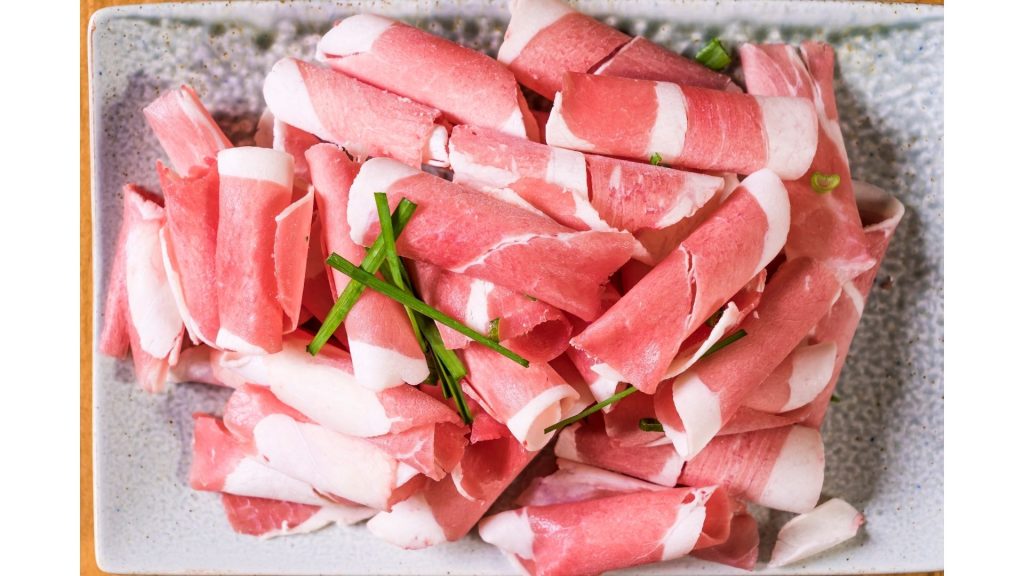
Is Prosciutto Gluten-Free?
The bad news is that it’s not a good idea to eat it with food sensitivities.
If you’re looking for a way to add a bit of variety to your lunches, then prosciutto may be the perfect option for you.
One of the oldest foods in the world is Prosciutto, which has been eaten by millions of people over the centuries.
Although you could argue that there are healthier alternatives in today’s market, as long as it is consumed in moderation, there is no reason why anyone couldn’t enjoy the delicious taste of prosciutto.
Types of Prosciutto
Most regions of Italy have different varieties of prosciutto. Different flavors, textures, colors, and even shapes can be achieved through unique production methods.
Quality protections in place include PDO or other designation. You can experience the vast flavors of Italy by trying many varieties.
Prosciutto Crudo
The production method is referred to as prosciutto crudo, which means “raw” or “uncooked.”
The traditional method dates back to at least pre-Roman times. Salt and sometimes other spices are used in the curing of prosciutto crudo.
The thinly-sliced ham is often deep red and marbled with fat.
Prosciutto Cotto
Prosciutto cotto is named for its production method, with cotto meaning “cooked.” This more recent variety is bright pink with a lighter flavor.
After being seasoned or brined with herbs and spices, it is cooked slowly at controlled temperatures.
Prosciutto di Parma
The most famous variety is Prosciutto di Parma, made from pigs in the hills of Parma, Italy.
The drying time of at least 18 months is included in the production of the PDO variety. The Prosciutto di Parma has a salty flavor with sometimes nutty overtones.
It helps cut down on the saltiness if you eat it in a panini or other sandwich.
Prosciutto di San Daniele
Prosciutto di San Daniele comes from the village of San Danielle Del Friuli, where breezes from the Alpine foothills give it a sweet taste.
Prosciutto di San Daniele reaches its peak flavor and texture after 16 months, according to some prosciutto lovers.
It has a lighter flavor that meshes well with cheese and bread.
Prosciutto di Modena
The province of Modena is known for its balsamic vinegar, but it also produces brightly colored prosciutto.
You can enjoy its less salty, more aromatic flavor with melon, figs, or other fruit.
Prosciutto Toscano
The flavor of this prosciutto is due to the curing process involving Tuscan spices like garlic, juniper, and pepper in addition to salt.
Locals eat it plain with bread because its strong seasonings pair well with milder dishes.
Prosciutto Veneto
Prosciutto Veneto Berico Euganeo received PDO classification in 1996, meaning that all bearing the lion-shaped Veneto brand were produced in the Euganean territory.
Its drying time lasts from 12 to 20 months, and it results in a lump of red-colored meat.
Prosciutto di Norcia
Only older, heavier pigs are used for the production of Prosciutto di Norcia, guaranteeing that the ham has a distinct pear shape, contains the perfect amount of fat, and weighs at least 18.2 pounds.
The flavor of this prosciutto is not overly salty and has a delicately spiced aroma.

Foodie and a passionate cook, I am here to share all of what I know about cooking, kitchen, and food prepping.
Follow me for delicious and healthy recipes.

